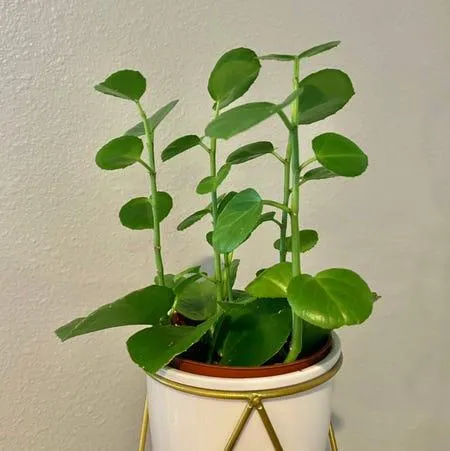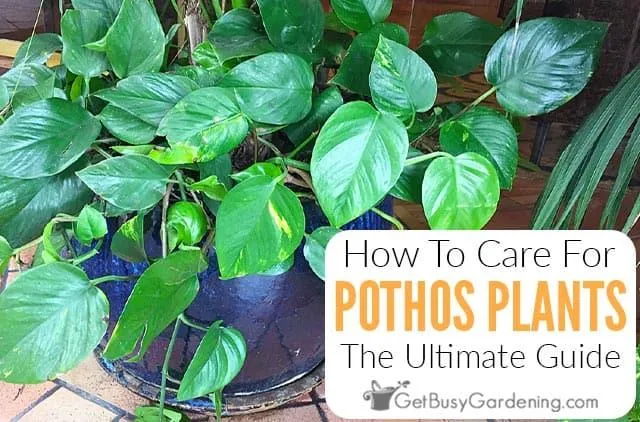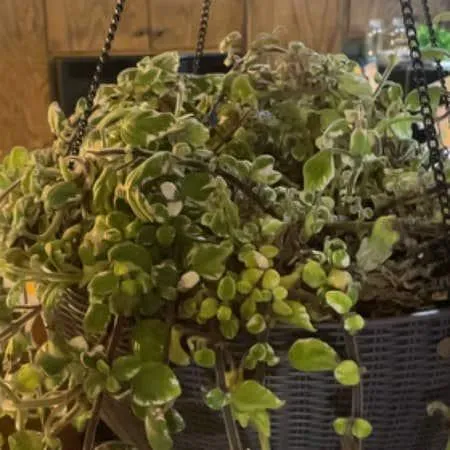The Complete Guide to Caring for Your Ivy Plant
If you’re looking to add a lightweight, low-maintenance vine to your home, ivy is a great choice. Known for being extremely hardy and adaptable, ivy is one plant that’s nearly impossible to kill. However, with the right care, your ivy can thrive for many years.
In this comprehensive guide, I’ll cover all the basics of ivy plant care including watering, lighting, pruning, propagation, and more. By the end, you’ll have everything you need to keep your ivy happy and healthy. Let’s get started!
Light Requirements
Ivy is pretty flexible when it comes to light but for the best growth, aim to provide your plant with bright, indirect light. Direct sun can scorch the leaves so it’s best to keep ivy out of direct afternoon sunlight. East or west-facing windows are ideal.
From my experience, ivy thrives best in medium to low light conditions like those found several feet back from a south or west-facing window. If light levels are too low, growth will be sparse and leggy. Too much direct sun and the leaves may burn.
Watering Tips
When it comes to watering, the motto for ivy is “drink, drain, and repeat.” Make sure the soil is allowed to dry out between waterings. Soggy soil causes root rot, which is a major killer of houseplants.
During the growing season from spring to fall, water whenever the top inch of soil is dry. In the winter when growth slows, cut back watering and only water when the top few inches of soil are dry. Avoid getting the leaves wet when watering from above as excess moisture can lead to fungus or mildew issues.

Humidity and Fertilizing
While ivy is very tolerant, it does appreciate moderate humidity levels around 50%. If the air is very dry, misting the leaves occasionally can boost humidity. Pebble trays filled with water under the pot also help raise localized humidity.
Fertilize during the active growing season from early spring to late summer every 4-6 weeks. I like to use a diluted, all-purpose liquid houseplant fertilizer. Be sure not to overfertilize which can burn the roots. Flush the soil in between feedings with plain water to remove any chemical buildup.
Potting and Repotting
Ivy can be grown in a variety of containers including hanging baskets, pots, or trained up a support. The ideal potting mix is well-draining, such as a recipe with plenty of perlite or bark added to regular potting soil.
Ivy is a vigorous grower that will quickly outgrow its existing container. When roots start circling the bottom or emerging from the drain holes, it’s time to carefully slip the plant out and transfer it to the next size up. Repot annually in early spring.
Pruning and Training
Ivy is a climbing vine that will shoot long tendrils in search of something to grasp onto. Provide a moisture or lattice for it to climb for an attractive trailing effect. You can even train ivy up an obelisk, trellis, or string for an upright look.
Pruning is beneficial for shaping and controlling growth. Trim off leggy stems to encourage branching. You can also prune back by about 1/3 after flowering to promote compact new growth. Use sharp, sterilized pruners and clip just above a leaf node.

Propagation
With its vigorous growth habit, ivy is extremely easy to propagate from cuttings. Simply remove 4-6 inch stem cuttings in late winter or early spring, strip the lower leaves, and place the cutting in a glass of water. Keep in a warm, bright spot until roots appear in 4-6 weeks. Then pot up in a well-draining media.
You can also layer ivy stems directly on soil to produce plantlets. Where the stem touches soil, roots will form and baby plants will sprout. Once established, cut from the parent plant.
Common Pests and Problems
Occasional mealybugs, spider mites or scale can infest ivy, usually under low humidity conditions. Wipe down leaves with a cotton ball dipped in rubbing alcohol to remove any pests. Repeated infestations may require a Horticultural oil or insecticidal soap treatment.
Wet or cold drafts can cause leaf drop or tip burn. Bring ivy inside if night temps regularly drop below 50°F. Indoors, check for moisture problems like mildew under humid conditions. Improve air circulation and reduce watering frequency if needed.
Varieties of Garden Ivy
While English ivy (Hedera helix) is most common, there are several other variety options:
- Baltic Ivy (Hedera helix ‘Baltica’) – Smaller leaves with bold cream and green variegation.
- Needlepoint Ivy (Hedera helix ‘Needlepoint’) – Narrow, pointed deep green leaves with winter hardiness.
- Goldchild Ivy (Hedera helix ‘Goldchild’) – Vibrant chartreuse and yellow variegated foliage all year.
- Purple Ivy (Hedera helix ‘Purpurea’) – Purple-tinged foliage will deepen color in partial shade.
Play around with different varieties until you find the perfect ivy to match your space! They all have similar care requirements.

I hope this comprehensive guide has answered any questions you may have had about caring for your ivy plant. The keys are bright, filtered light, allowing the soil to dry out between waterings, and occasional pruning and fertilizer. With the right conditions, ivy makes a beautiful, versatile addition to both indoor and outdoor gardens. Let me know if you have any other questions!
Tips for Caring for Your Ivy Plant
| Sunlight | Ivy plants prefer bright, indirect sunlight. Place them near an east or west-facing window to avoid harsh midday sun. |
|---|---|
| Water | Water when the top inch of soil is dry. Do not overwater as ivy is susceptible to root rot. Water less in winter when the plant is not actively growing. |
| Fertilizer | Fertilize monthly in spring and summer with a liquid houseplant fertilizer. Dilute to 1/2 or 1/4 strength as directed on the package. |
| Humidity | Ivy grows well in average household humidity but may drop leaves if dry air is below 30%. Consider a pebble tray or humidifier. |
| Pruning | Prune as needed to shape the plant or remove dead or diseased growth. Cut stems back to a set of healthy leaves. |
| Repotting | Repot every 2-3 years in early spring using a well-draining potting mix only 1-2 inches larger than the current pot. |
FAQ
-
How much sunlight does ivy need?
Ivy sort of needs a decent amount of sunlight each day to survive. Around 4-6 hours is usually good, although it can adjust if it’s a little less. Put it in a spot that gets mostly indirect light, like near a window.
-
How often should I water ivy?
You’ll want to water ivy when the soil becomes dry. Stick your finger in the soil and if the top inch is dry, then it’s time to water. Generally, watering once a week is sufficient in most homes. At the same time, don’t overwater – ivy doesn’t like soggy soil.
-
What type of soil does ivy prefer?
Ivy grows best in rich, well-draining soil. A potting mix or soil mixed with compost works well. The soil shouldn’t stay soggy after watering. You can add perlite or gravel to improve drainage if needed. Poor drainage is one of the leading causes of ivy declining.
-
How do I get ivy to grow up a trellis?
To get ivy to climb up a trellis or other support, you first need to hand-train the stems in the right direction. Gently wrap the stems around the support as they grow. The small pads on the stem will attach and help it cling. Be patient, as it may take a while before it really starts climbing on its own. Keep training new growth upwards.
-
Will ivy be harmful to trees?
Most varieties of ivy are not significantly harmful to mature trees. However, English ivy can pose problems if it completely covers a tree. The sheer mass of ivy clinging to branches could weigh them down over decades. It may also compete with trees for water and nutrients. So it’s best to keep ivy growth controlled and not let it blanket an entire tree.

-
How do I prune ivy?
You typically don’t need to prune ivy much. Occasionally, you can trim off any non-vigorous or diseased looking growth to maintain a bushy shape. In spring, you may want to trim off last season’s growth to encourage new bud formation. Be careful not to trim back into old woody stems. Always use clean pruning shears and disinfect between cuts to avoid spreading disease.
-
Is ivy poisonous to pets?
While the foliage of English ivy is not considered toxic to dogs or cats, if ingested in large quantities it could cause tummy issues. The berries are somewhat more concerning as they contain saponins, which can induce vomiting if eaten. It’s best to discourage pets from nibbling houseplants like ivy as a precaution. Supervise playtime if cats or dogs show interest in plants.
Ivy is a lovely, low-maintenance houseplant that adds texture and interest to interior spaces. With the right care, it can thrive for years. While ivy poses minimal harm, it’s always wise to educate yourself on plant safety. If unsure, consult an expert to avoid regrettable mistakes. Let me know if you have any other questions!
